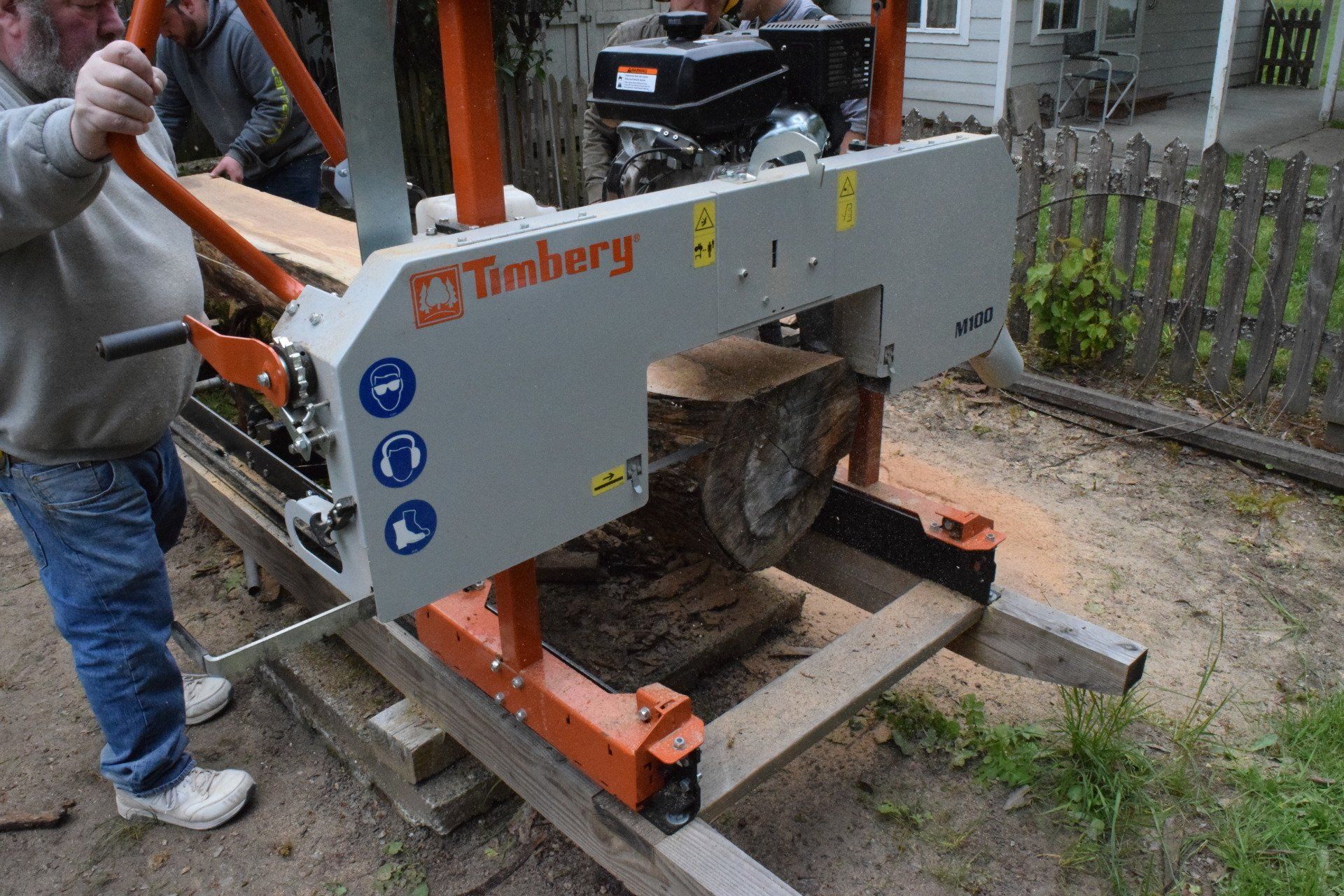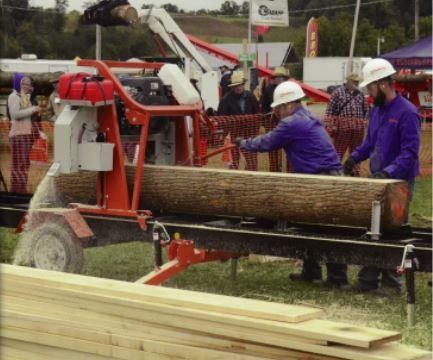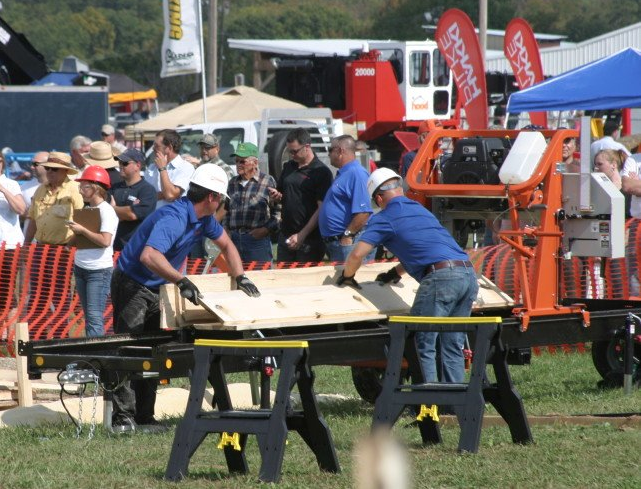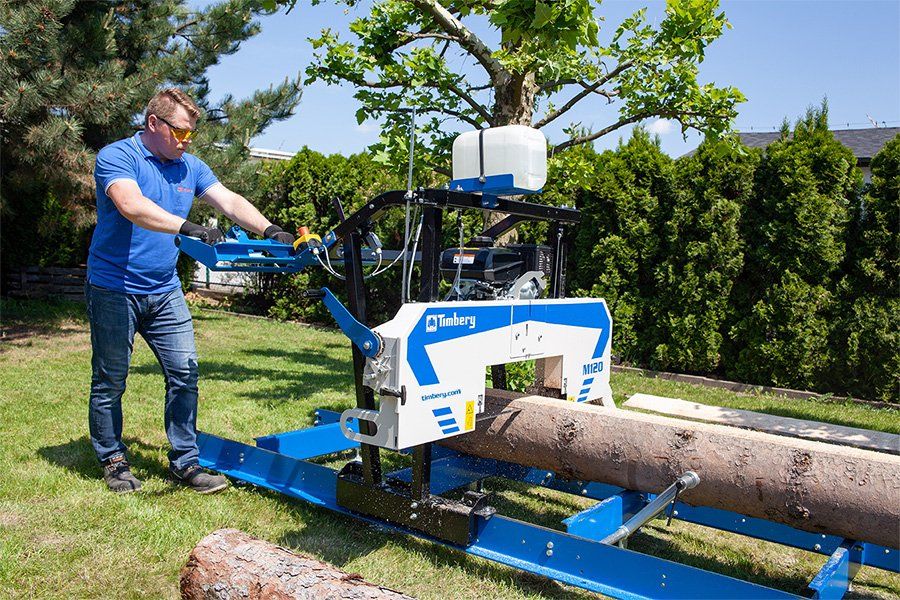2017 Paul Bunyan Portable Sawmill Shootout | Timbery
- By Timbery
- •
- 12 Feb, 2019
- •
The Great Portable Sawmill Shoot-Out® featuring Timbery M280 Sawmill
The preceding article was edited in length and republished with permission from
Independent Sawmill & Woodlot Magazine.
Model: Timbery M280
Sawyer: Chad Sanders
Tailman: Jake Welker
Log scale: 386
Actual production: 381
Production: 641 BF / hour
Production underrun: 1%
Miscuts: 13
Options Used: Timbery E100 edger, log ramps
Mill engine: 23-hp Vanguard
Cutting capacity: 25" x13' 11"
Sawyer: Chad Sanders
Tailman: Jake Welker
Log scale: 386
Actual production: 381
Production: 641 BF / hour
Production underrun: 1%
Miscuts: 13
Options Used: Timbery E100 edger, log ramps
Mill engine: 23-hp Vanguard
Cutting capacity: 25" x13' 11"
Even before the last sawmill was pulled out of the Shoot-Out area Timbery brought its model M280
to the Shoot-Out this year. This mill has a log capacity of 28-inch diameter and 13 feet 11 inches in length, so it had no problem with the 15-inch and 16-inch yellow poplar logs provided at the Shoot-Out. With Timbery project manager Chad Sanders at the controls of the mill and service technician Jake Welker assisting in loading and turning logs, offbearing, and running the edger, the team had a nearly perfect run this year. According to Chad, this manual sawmill is identical to the 285
they had demonstrated in the past, except that it does not include the trailer package.
Even though this mill is less portable and takes more setup time, it sits
lower to the ground, allowed the team to roll the logs onto the deck with
cant hooks instead of the hand-cranked winch, saving precious time.
“Winching up from the ground in 2015 was a real time killer,” Jake
explained. “But having the logs decked up and rolling them onto the mill
was extremely time efficient. It was only about a 6-inch lift, and it made
loading the logs real easy. The only downside was that there was a little more
lifting when it came to offbearing.”
Another change from the previous Great Portable Sawmill Shoot-Out
was
the introduction of Timbery’s edger. Although edgers are not commonly
used with manual band saws, Chad noted that an increasing number of
sawyers are using them to improve yield and productivity. “If you have a
two-man operation, the mill is continually running. It also helps with production because each board is edged individually,” Chad noted. This certainly proved true for this year’s Shoot-Out. “It beats handling the boards twice
and edging them on the sawmill,” Jake agreed. “It is self-feeding so you just
get it started, go around to the other side and catch the board as it comes
off.” How well did these changes work? Comparing the Timbery results
from the 2015 Shoot-Out, lowering the mill and adding the edger increased
production from 423 to 641 BF/hr.—over a 50% increase.
Jake noted that the edger slows down on 2-inch thick cuts. To use it to its best advantage, Chad cut all
1-inch-thick boards until he had a 10-inch-wide cant,
then cut 2-inch-thick boards that could go straight to
the lumber pile. That way, Jake only had 1-inch-thick
boards to edge. “We had that planned out ahead of
time,” Jake said. “I was having a hard enough time
keeping up with Chad, the way he was cutting.”
Chad and Jake put a lot of planning into the Shootout, starting out with preparing the logs. “Last Shoot-Out, we had to stop and change a blade because of all
the mud in the logs, but this year, we cleaned them up
pretty carefully, especially where we were going to be
cutting,” he explained. “The mill was fine-tuned and
ready to go and we knew ahead of time exactly what
we were going to cut and where the drops were going
to be.”
To work together more smoothly, the Timbery team
used wireless headsets that allowed Chad and Jake to
communicate with each other. Chad noted that this
was especially helpful, since Jake was so busy running
the edger. “It helped to communicate without yelling
over the equipment,” Chad said. “For example, when
he was at the edger and I needed help turning a log, I
could call him over. If he was too busy, it helped me
know ahead of time that I would need to turn the log
or pull a board off.”
“I think overall it was a good performance,” Chad
concluded. “This year was really smooth. There was
quite a bit of interest in both the sawmill
and the edger. It’s always fun to get the mill out there and let
people see what it can do. When we do a Shoot-Out, I
try to run the mill the way the customer would, and
keep everything simple.”
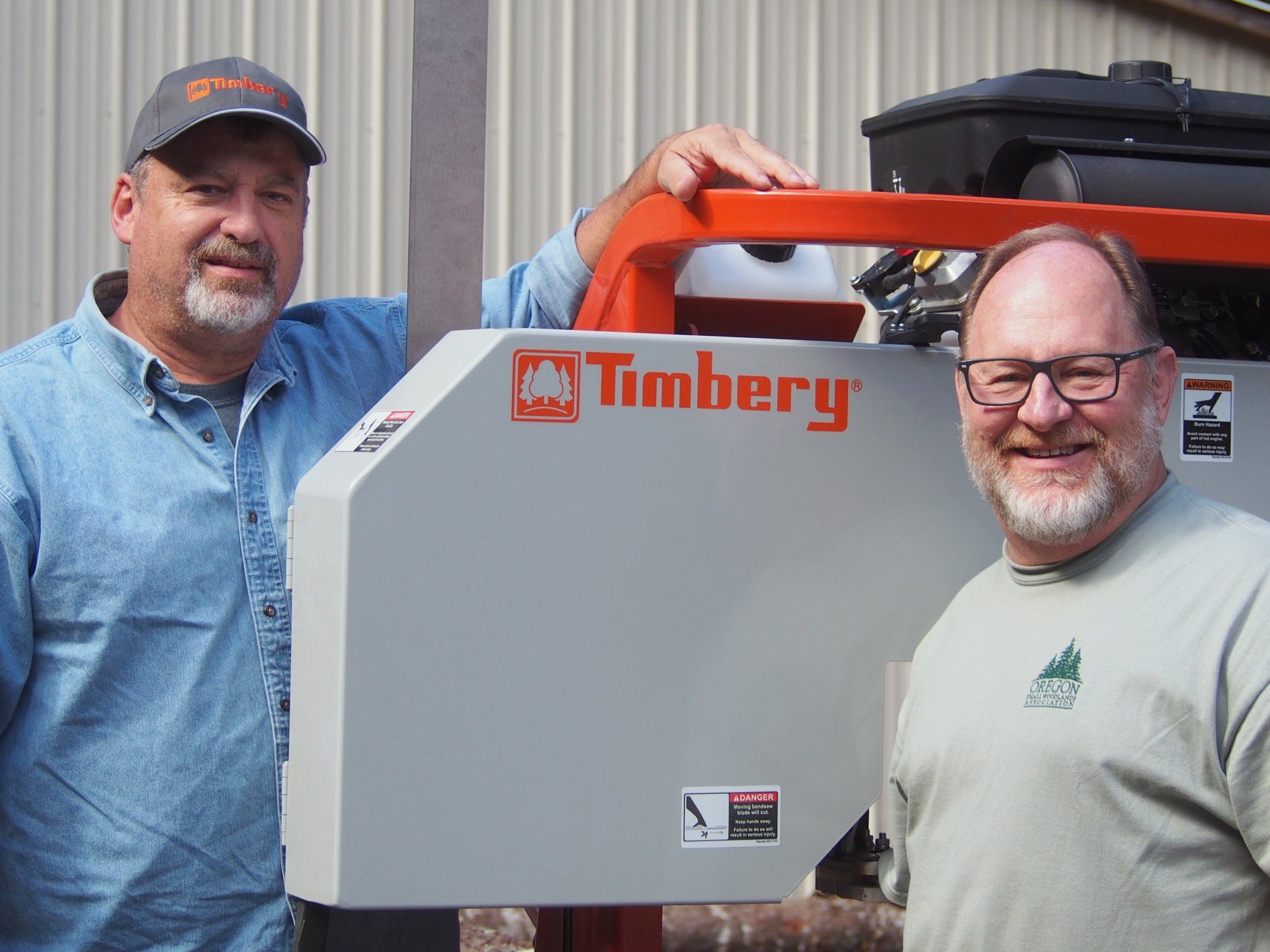
Timbery introduces Heicor Enterprises, LLC in Monmouth, Oregon as Timbery West - an authorized dealer of Timbery Portable Sawmills. Timbery offers a range of personal sawmills geared specifically for homesteads, farms, small woodlots, tree farms, as well as cabinet, custom woodworking, and specialty lumber shops.



